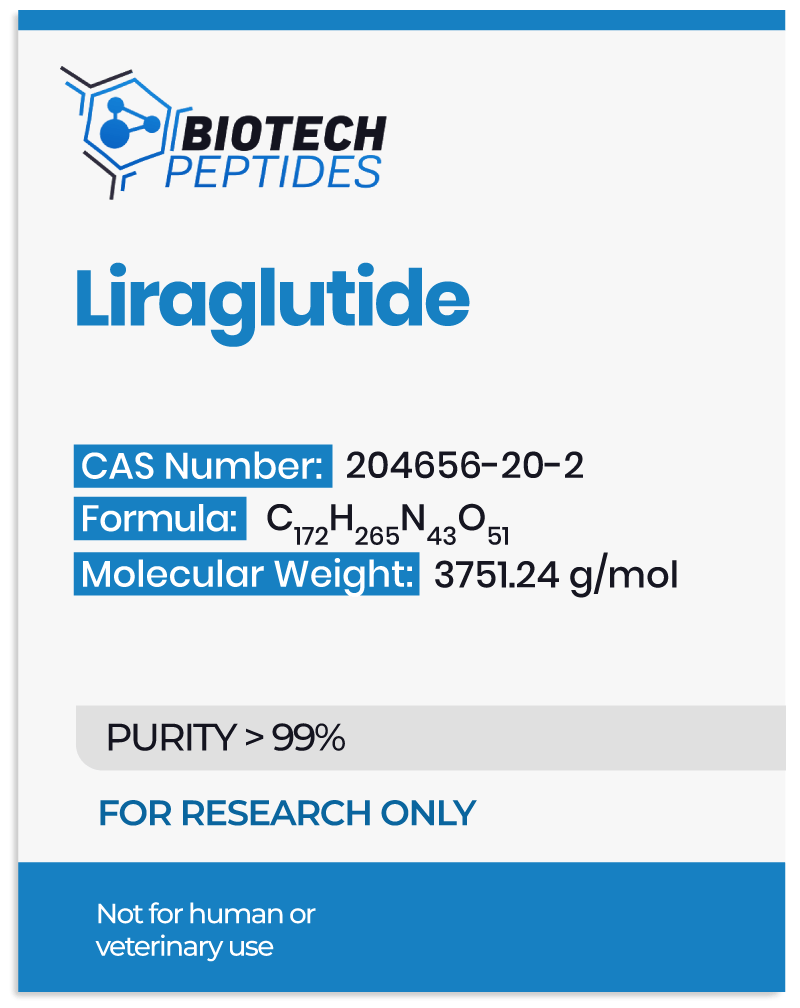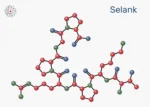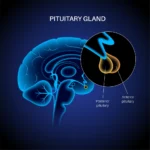The development of Liraglutide peptide began with the discovery of GLP-1, an incretin hormone believed to stimulate insulin secretion and lower postprandial glucose levels. This discovery appeared to have spurred research into synthetic GLP-1 receptor agonists, culminating in the creation of Liraglutide peptide. Preclinical studies have since suggested that the peptide may be efficient in improving glycemic control, reducing weight, and thereby potentially mitigating cardiovascular risks.
The actions of Liraglutide are speculated to be mediated through its interaction with GLP-1 receptors (GLP-1R), which are widely expressed in pancreatic beta cells, the gastrointestinal tract, and the central nervous system. Upon binding to GLP-1R, Liraglutide peptide may initiate several signaling cascades that contribute to its possible diverse physiological functions.
Glucose-Dependent Insulin Secretion
Liraglutide appears to activate GLP-1R on pancreatic beta cells, possibly facilitating insulin release in response to elevated blood glucose levels.[2] This reported glucose-dependent mechanism may minimize the risk of hypoglycemia, a significant advantage over traditional insulin studies.
Glucagon Secretion
By potentially suppressing glucagon release from pancreatic alpha cells, Liraglutide is speculated to reduce hepatic glucose production, possibly contributing to improved glycemic control.[1]
Gastric Emptying
Liraglutide appears to slow gastric motility, prolonging nutrient absorption and satiety. This effect is hypothesized to play a role in appetite regulation.
Neuroendocrine Action
GLP-1R activation in the central nervous system has been linked to appetite suppression and potential enhancements in cognitive functions, as suggested by preclinical studies.[3]
Beta Cells
Research suggests that Liraglutide may stimulate the proliferation and differentiation of pancreatic beta cells, protecting them from apoptosis and promoting their long-term function.
Cardioprotective Potential
GLP-1R is also expressed in cardiac tissue, where Liraglutide may exert protective potential. Studies suggest its involvement in glucose uptake within cardiac muscles, potentially reducing ischemic damage and supporting myocardial survival.[4]
Scientific Research and Studies
Liraglutide Peptide and the Incretin Effect
The Incretin Effect, as characterized by Dr. Holst, is a physiological mechanism mediated by glucagon-like peptide-1 (GLP-1), a metabolic hormone released by the gastrointestinal (GI) tract. Incretins, including GLP-1 and glucose-dependent insulinotropic polypeptide (GIP), appear to play potential roles in lowering blood glucose levels through their perceived glucose-dependent stimulation of insulin secretion. Among these, GLP-1 is posited to exhibit superior potency compared to GIP, particularly under hyperglycemic conditions, despite circulating at significantly lower concentrations—approximately tenfold less than GIP.
A notable study[1] conducted in 2007 studied the introduction of Liraglutide peptide in isolated rat pancreases pre-exposed to sulfonylurea drugs. The findings suggested that while GLP-1 introduction under low glucose concentrations had minimal effects on insulin secretion, prior exposure to sulfonylurea compounds significantly amplified the insulinotropic response. The study reported a “dramatic stimulation of insulin secretion” under these conditions. Moreover, clinical data suggest that “30–40% of [research models exposed to] both sulfonyl urea compounds and a GLP-1 agonist (exendin 4) experience, usually mild, hypoglycemia”, underscoring the conceivably synergistic interaction between these two agents.
This study suggests the possible role of GLP-1 in the incretin effect and suggests that Liraglutide’s efficacy may be further optimized when studied alongside agents that may sensitize pancreatic beta cells, such as sulfonylureas.
Obesity
Research utilizing murine models has suggested that exposure to glucagon-like peptide-1 (GLP-1) and its analogs, such as GLP-1 receptor agonists (GLP-1RAs) like Liraglutide peptide, directly into the central nervous system may result in a reduction in appetite and food consumption. This observation suggests that these peptides may increase satiety signaling pathways, contributing to a sensation of fullness and a subsequent decrease in caloric intake.[5]
Recent preclinical investigations have further reported that the twice-daily exposure of GLP-1RAs in mice may produce gradual and sustained weight loss over time. This reduction in body weight may also correlate with improvements in cardiovascular risk factors and a decline in hemoglobin A1C levels, a biomarker commonly employed to evaluate long-term glycemic control and the perceived effectiveness of diabetes management resources. These findings suggest the multifaceted metabolic potential associated with Liraglutide peptide and its hypothesized capacity to influence both weight and associated physiological outcomes.
Liraglutide Peptide and Gastric Motility
Investigations suggest that exposure to Liraglutide peptide may result in a 23% reduction in gastric emptying within the first hour postprandially, compared to placebo. However, no significant difference was observed in the 5-hour gastric emptying time between Liraglutide peptide and the placebo. This transient postprandial delay in gastric motility may still be sufficient to enhance early satiety.[6]
The mechanisms underlying Liraglutide’s effect on gastric motility are hypothesized to be multifactorial, involving complex neural and hormonal interactions. Liraglutide peptide appears to engage GLP-1 receptors (GLP-1Rs) located both within the central nervous system (CNS) and the peripheral nervous system. Activation of GLP-1Rs on enteroendocrine cells in the gastrointestinal tract, which appear responsive to nutrient intake, likely mimics and enhances the physiological actions of endogenous GLP-1.
Upon activation, these receptors may initiate signaling through the enteric nervous system, which governs gastrointestinal motility. This signaling is thought to regulate the contractile activity of the stomach, thereby slowing the rate at which gastric contents are released into the small intestine. Concurrently, Liraglutide-mediated activation of GLP-1Rs may also engage the vagal nerve, transmitting signals to the CNS. This central pathway may further modulate autonomic feedback mechanisms that influence gastric motility, reinforcing the peptide’s potential to reduce the rate of gastric emptying. These processes collectively highlight the sophisticated interplay between peripheral and central mechanisms in mediating Liraglutide’s effects on gastric motility.[7]
Liraglutide Peptide and Beta Cells
Research utilizing animal models suggests that glucagon-like peptide-1 (GLP-1) and its analogs, such as Liraglutide peptide, may exert significant effects on the proliferation and growth of pancreatic beta cells. Additionally, GLP-1 analogs like Liraglutide peptide are hypothesized to facilitate the differentiation of beta cells from progenitor cells within the epithelial lining of the pancreatic duct. These peptides may also inhibit beta-cell apoptosis, thereby altering the balance between beta-cell growth and death in favor of cell survival and expansion.[8]
The cumulative data suggests that Liraglutide peptide may play a role in maintaining beta cell mass and function, which may aid in diabetes-related studies. By promoting beta cell proliferation and differentiation while concurrently reducing apoptosis, Liraglutide peptide may contribute to preserving pancreatic function and mitigating damage to beta cells caused by metabolic or inflammatory insults.
Furthermore, a pivotal study suggested that Liraglutide peptide may mitigate beta cell death triggered by elevated levels of pro-inflammatory cytokines. Experimental models of type 1 diabetes in mice have indicated that GLP-1 analogs may protect pancreatic islet cells, potentially delaying or preventing the onset of autoimmune beta cell destruction associated with type 1 diabetes. These findings underscore the potential of Liraglutide peptide as a protective agent within research related to beta cells.[8]
Liraglutide Peptide and Cardiovascular Impact
The distribution of glucagon-like peptide-1 (GLP-1) receptors throughout cardiac tissue suggests a potential role for GLP-1 and its analogs, such as Liraglutide peptide, in modulating cardiac function. Based on the studies, it appears that GLP-1 receptor activation may potentially increase heart rate and reduce left ventricular end-diastolic pressure, mechanisms that might mitigate left ventricular hypertrophy, cardiac remodeling, and the progression to heart failure.[9]
Emerging data suggest that GLP-1 and related peptides may reduce myocardial damage during ischemic events such as myocardial infarction. These peptides appear to facilitate glucose uptake in cardiac myocytes, thereby supplying ischemic myocardial cells with critical nutrients. This glucose uptake is noted to occur independently of insulin, highlighting a unique cardioprotective mechanism. By supporting cellular metabolism and reducing apoptosis, GLP-1 receptor agonists like Liraglutide peptide may help preserve myocardial integrity in ischemic conditions.
Studies in canine models, where GLP-1 was introduced in significant quantities, reportedly exhibited improvement in left ventricular performance and reported decrease systemic vascular resistance. These effects contribute to reductions in blood pressure and myocardial strain, potentially alleviating hypertension-related complications such as ventricular remodeling, vascular thickening, and heart failure.
Nikolaidis et al. reported “rGLP-1 dramatically improved LV and systemic hemodynamics in dogs with advanced DCM induced by rapid pacing. rGLP-1 has insulinomimetic and glucagonostatic properties, with resultant increases in myocardial glucose uptake. rGLP-1 may be a useful metabolic adjuvant in decompensated heart failure.” [10]
Neuroprotection
Recent findings suggest that glucagon-like peptide-1 (GLP-1) and its analogs, may hold significant neuroprotective potential. GLP-1 receptor activation has been associated with improved cognitive functions, including learning and memory, and may provide protection against neurodegenerative conditions such as Alzheimer’s disease.
Experimental studies have reported that GLP-1 appears to enhance associative and spatial learning in murine models and may possibly mitigate learning deficits in mice with specific genetic abnormalities. Notably, rats with increased expression of GLP-1 receptors in distinct brain regions exhibited superior learning and memory performance compared to control groups. This suggests a link between GLP-1 receptor activity and improved cognitive capacity.[11]
In addition to cognitive potential, GLP-1 analogs like Liraglutide peptide have been suggested by researchers to exert protective effects against excitotoxic neuronal damage. Research using rat models of neurodegeneration has revealed that Liraglutide peptide may provide fairly robust protection against glutamate-induced apoptosis, a key mechanism underlying neuronal loss in neurodegenerative disorders.[12] Furthermore, in vitro studies appear to suggest that GLP-1 analogs may promote neurite outgrowth, indicating a role in neural regeneration and repair.
Disclaimer: The products mentioned are not intended for human or animal consumption. Research chemicals are intended solely for laboratory experimentation and/or in-vitro testing. Bodily introduction of any sort is strictly prohibited by law. All purchases are limited to licensed researchers and/or qualified professionals. All information shared in this article is for educational purposes only.
References:
- Holst JJ. The physiology of glucagon-like peptide 1. Physiol Rev. 2007 Oct;87(4):1409-39. doi: 10.1152/physrev.00034.2006. PMID: 17928588. https://pubmed.ncbi.nlm.nih.gov/17928588/
- Tandong Yang, Meng Chen, Jeffrey D. Carter, Craig S. Nunemaker, James C. Garmey, Sarah D. Kimble, Jerry L. Nadler, Combined treatment with lisofylline and exendin-4 reverses autoimmune diabetes, Biochemical and Biophysical Research Communications, Volume 344, Issue 3, 2006, Pages 1017-1022, ISSN 0006-291X, https://www.sciencedirect.com/science/article/pii/S0006291X06007066
- Blonde L, Klein EJ, Han J, Zhang B, Mac SM, Poon TH, Taylor KL, Trautmann ME, Kim DD, Kendall DM. Interim analysis of the effects of exenatide treatment on A1C, weight and cardiovascular risk factors over 82 weeks in 314 overweight patients with type 2 diabetes. https://pubmed.ncbi.nlm.nih.gov/16776751/
- Bose AK, Mocanu MM, Carr RD, Brand CL, Yellon DM. Glucagon-like peptide 1 can directly protect the heart against ischemia/reperfusion injury. Diabetes. 2005. https://pubmed.ncbi.nlm.nih.gov/15616022/
- Blonde L, Klein EJ, Han J, Zhang B, Mac SM, Poon TH, Taylor KL, Trautmann ME, Kim DD, Kendall DM. Interim analysis of the effects of exenatide treatment on A1C, weight and cardiovascular risk factors over 82 weeks in 314 overweight patients with type 2 diabetes. https://pubmed.ncbi.nlm.nih.gov/16776751/
- van Can J, Sloth B, Jensen CB, Flint A, Blaak EE, Saris WH. Effects of the once-daily GLP-1 analog Liraglutide peptide on gastric emptying, glycemic parameters, appetite and energy metabolism in obese, non-diabetic adults. Int J Obes (Lond). 2014 Jun;38(6):784-93. doi: 10.1038/ijo.2013.162. Epub 2013 Sep 3. PMID: 23999198; PMCID: PMC4052428. https://pmc.ncbi.nlm.nih.gov/articles/PMC4052428/
- Drucker DJ. Mechanisms of Action and Therapeutic Application of Glucagon-like Peptide-1. Cell Metab. 2018 Apr 3;27(4):740-756. doi: 10.1016/j.cmet.2018.03.001. PMID: 29617641. https://pubmed.ncbi.nlm.nih.gov/29617641/
- Tandong Yang, Meng Chen, Jeffrey D. Carter, Craig S. Nunemaker, James C. Garmey, Sarah D. Kimble, Jerry L. Nadler, Combined treatment with lisofylline and exendin-4 reverses autoimmune diabetes, Biochemical and Biophysical Research Communications, Volume 344, Issue 3, 2006, Pages 1017-1022, ISSN 0006-291X, https://www.sciencedirect.com/science/article/pii/S0006291X06007066)
- Bose AK, Mocanu MM, Carr RD, Brand CL, Yellon DM. Glucagon-like peptide 1 can directly protect the heart against ischemia/reperfusion injury. Diabetes. 2005. https://pubmed.ncbi.nlm.nih.gov/15616022/
- Nikolaidis LA, Elahi D, Hentosz T, Doverspike A, Huerbin R, Zourelias L, Stolarski C, Shen YT, Shannon RP. Recombinant glucagon-like peptide-1 increases myocardial glucose uptake and improves left ventricular performance in conscious dogs with pacing-induced dilated cardiomyopathy. Circulation. 2004 Aug 24;110(8):955-61. https://pubmed.ncbi.nlm.nih.gov/15313949/
- During MJ, Cao L, Zuzga DS, Francis JS, Fitzsimons HL, Jiao X, Bland RJ, Klugmann M, Banks WA, Drucker DJ, Haile CN. Glucagon-like peptide-1 receptor is involved in learning and neuroprotection. Nat Med. 2003 Sep; https://pubmed.ncbi.nlm.nih.gov/12925848
- Perry T, Haughey NJ, Mattson MP, Egan JM, Greig NH. Protection and reversal of excitotoxic neuronal damage by glucagon-like peptide-1 and exendin-4. J Pharmacol Exp Ther. 2002 Sep;302(3):881-8. doi: 10.1124/jpet.102.037481. PMID: 12183643. https://pubmed.ncbi.nlm.nih.gov/12183643/







